Abstract
1. The cardiovascular responses to voluntary isometric contractions performed by human subjects are determined by the proportion of maximal tension achieved by the muscles contracting, and not by the mass of the contracting muscles, nor by the absolute tension achieved (Lind & McNicol, 1967; confirmed here). When two or more muscle groups contract simultaneously at different relative tensions, the increments in heart rate and blood pressure are the same as when the muscle group at the higher relative tension contracts alone at that tension (Lind & McNicol, 1967). It is known that there are both central and reflex stimuli to the cardiovascular system in exercise, and the present study examines whether the muscular reflex stimuli are related to the proportion of maximal tension achieved or to the mass of contracting muscle. 2. Isometric hind-limb contractions were induced in anaesthetized dogs and cats by stimulation of spinal ventral roots. Pressor responses to contraction of both hind limbs were greater than responses to contractions of either hind limb alone. No differences were observed between heart rate responses to single or combined hind-limb contractions. 3. When human subjects perform isometric contractions, a pressor response can be maintained beyond the conclusion of the exercise by occluding muscle blood flow. This response is generally attributed to a reflex set up in the muscle by the action of chemical factors on afferent nerves. When comparable pressor responses were evoked by comparable proportional efforts with either the whole hand or the little finger, it was found here that the pressor responses remaining during the period of post-exercise occlusion were greater when the greater mass of muscle had been exercised. 4. It is concluded that the muscular reflex drive in isometric exercise is related to the bulk of contracting muscle.
Full text
PDF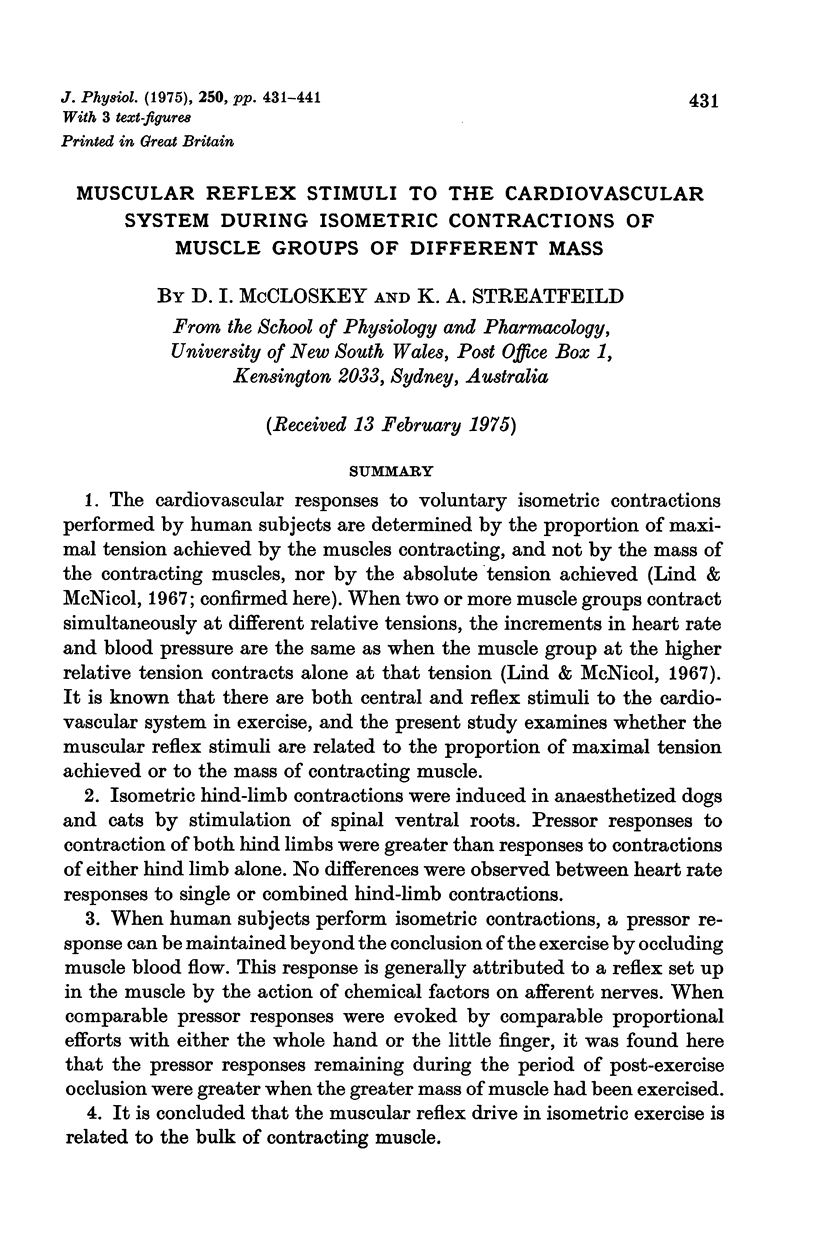
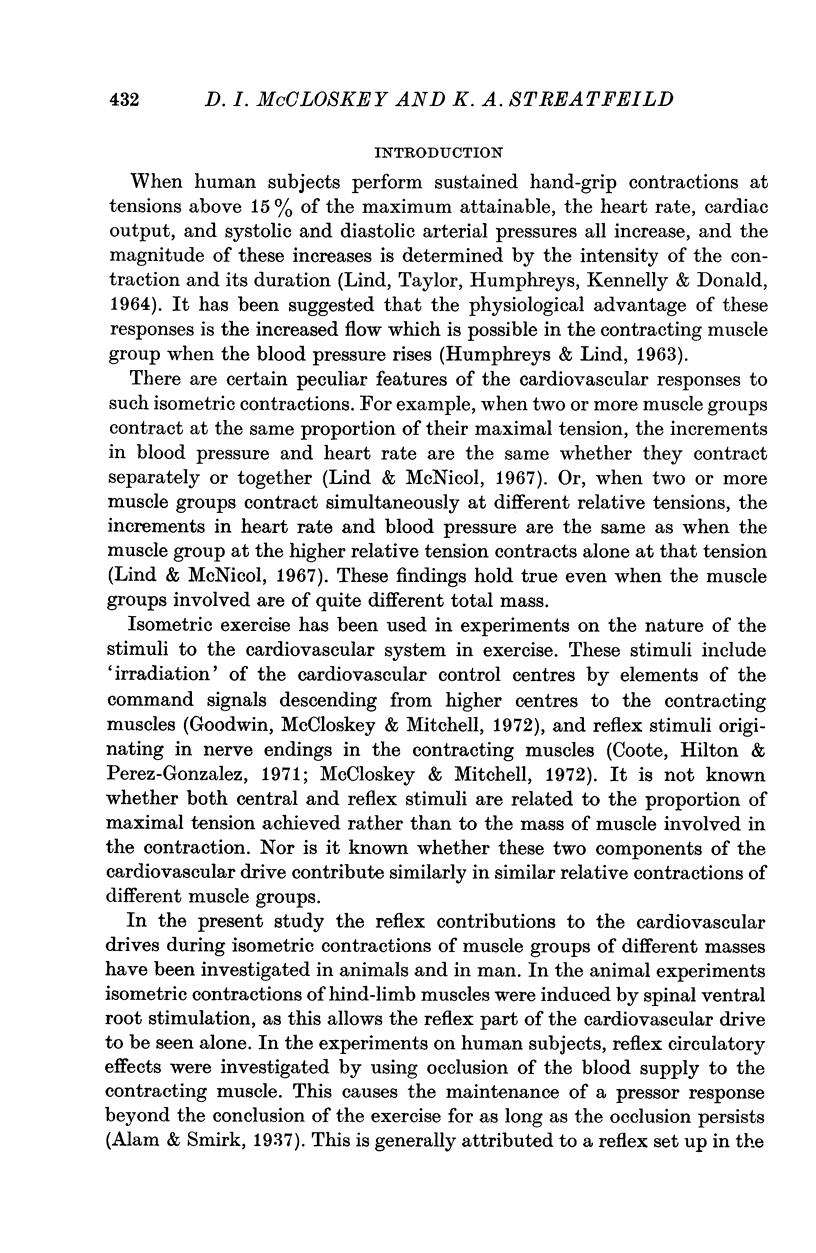
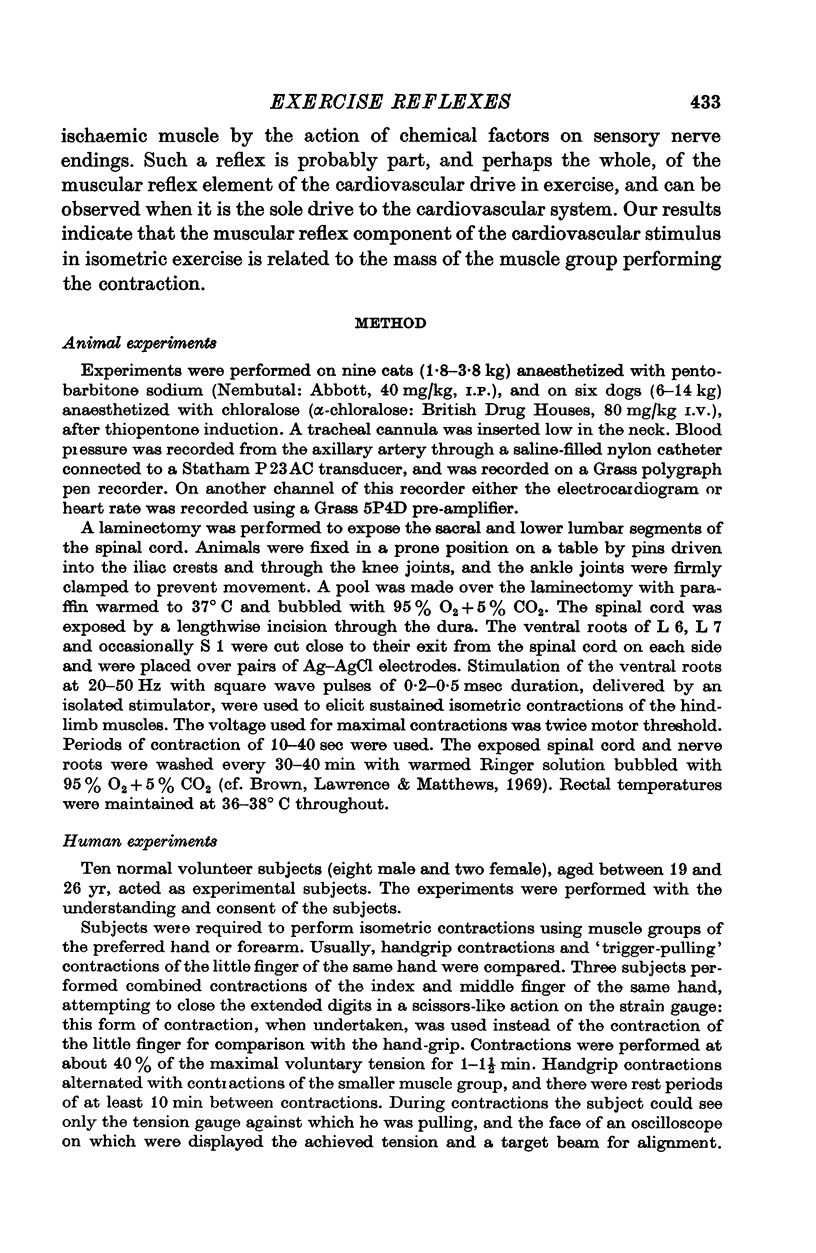
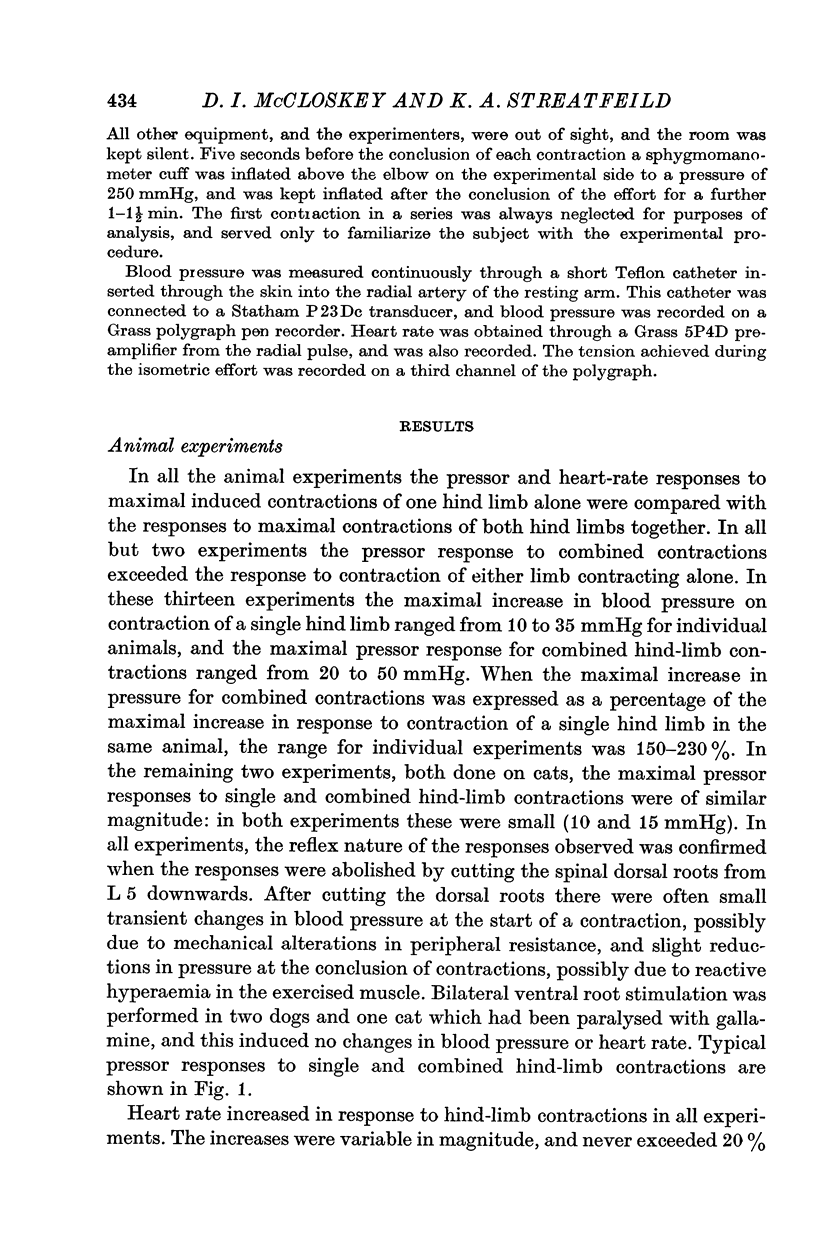
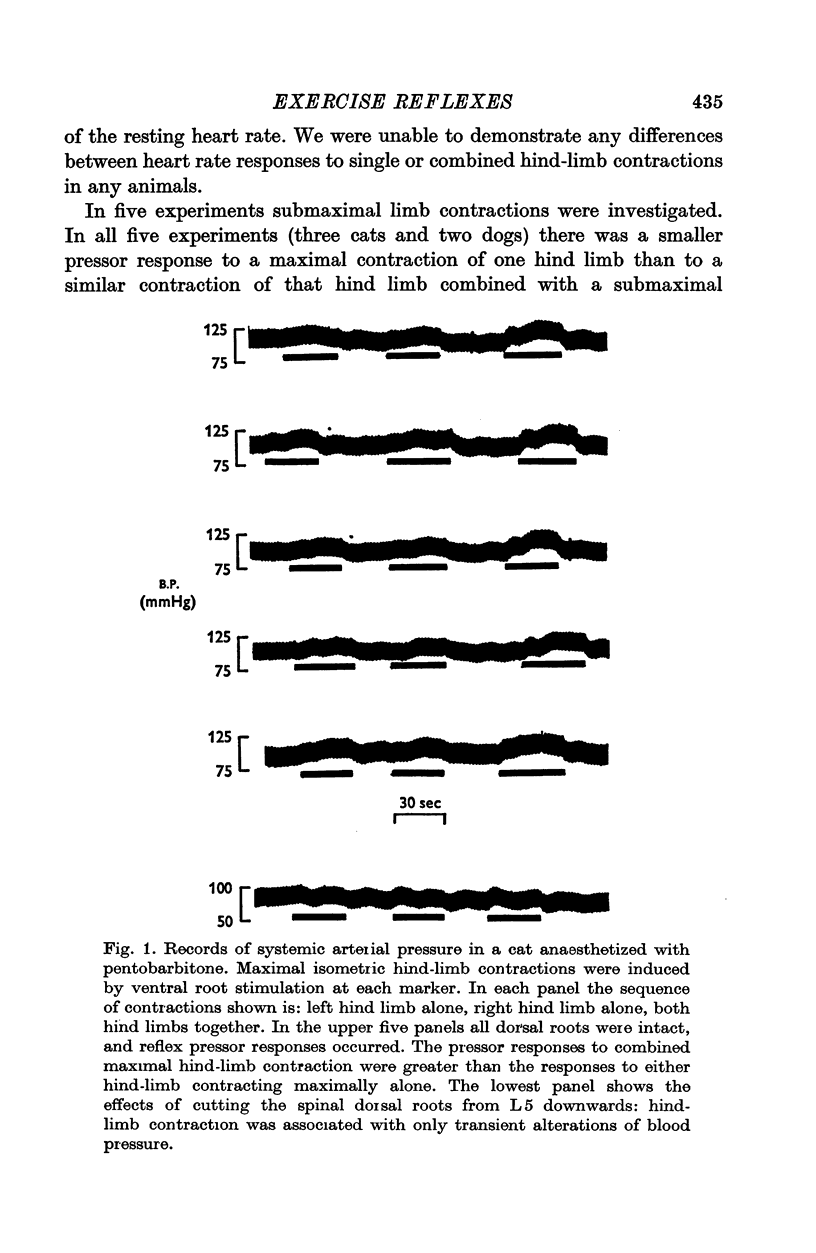
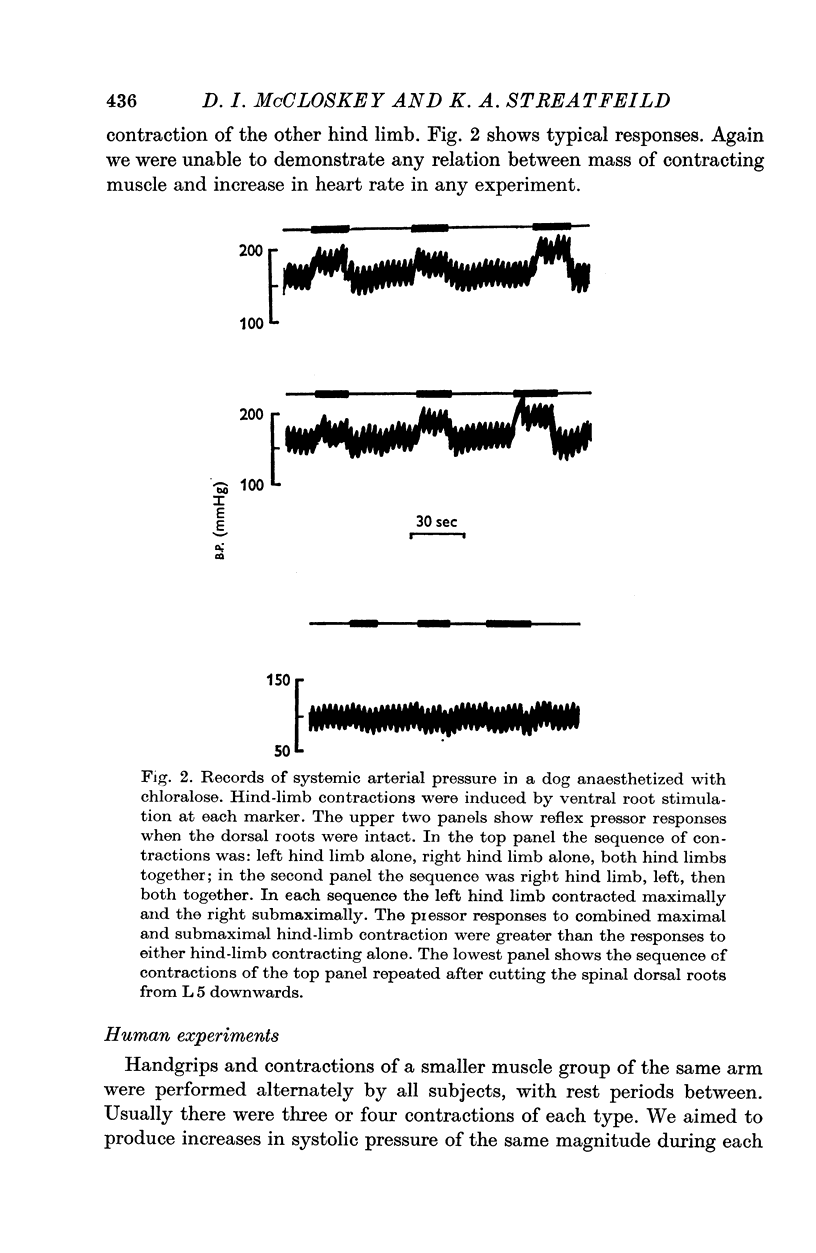
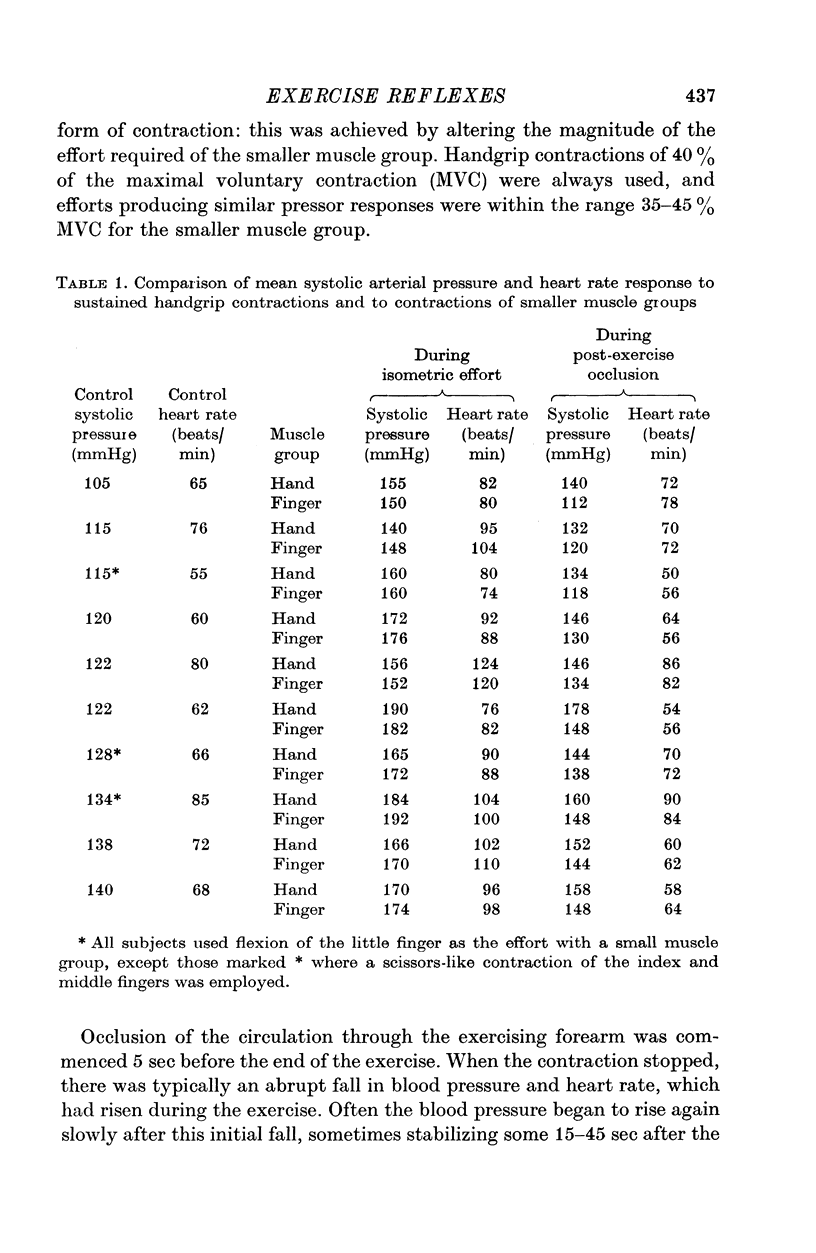

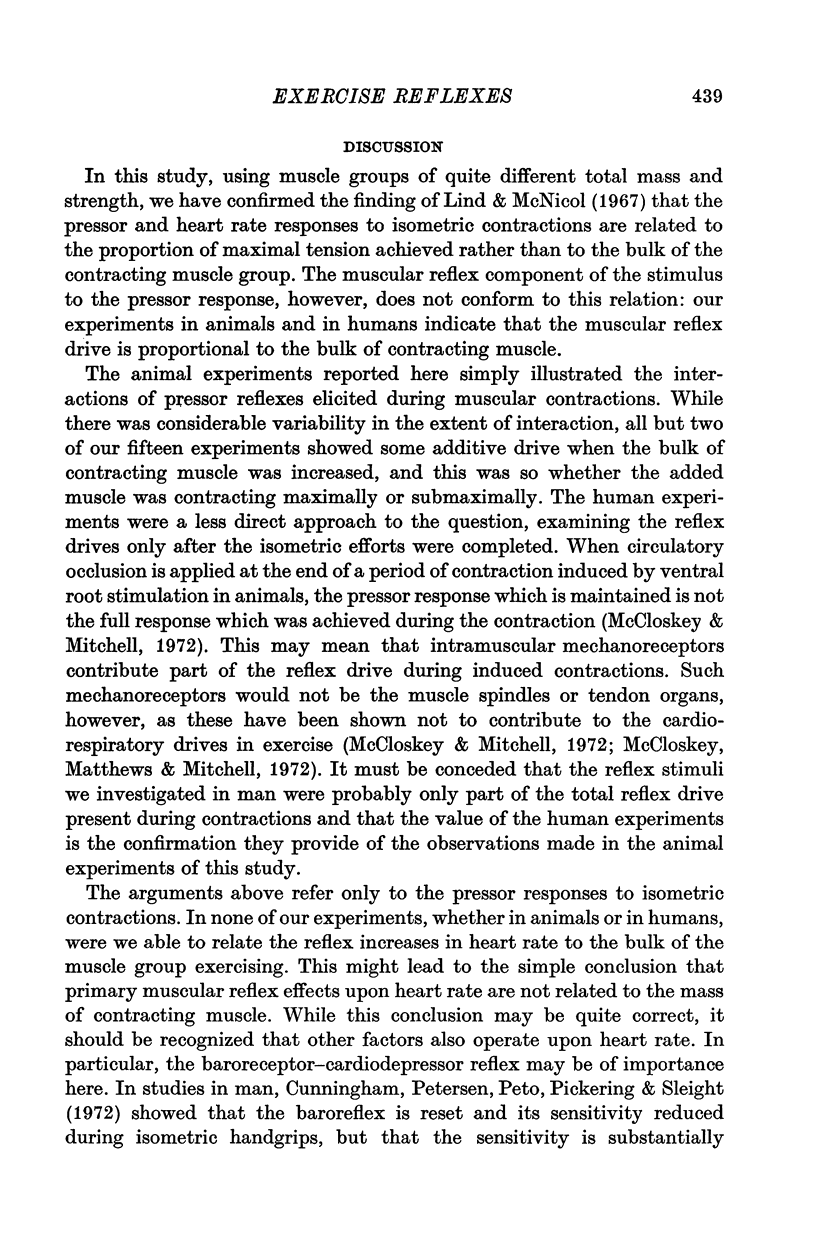
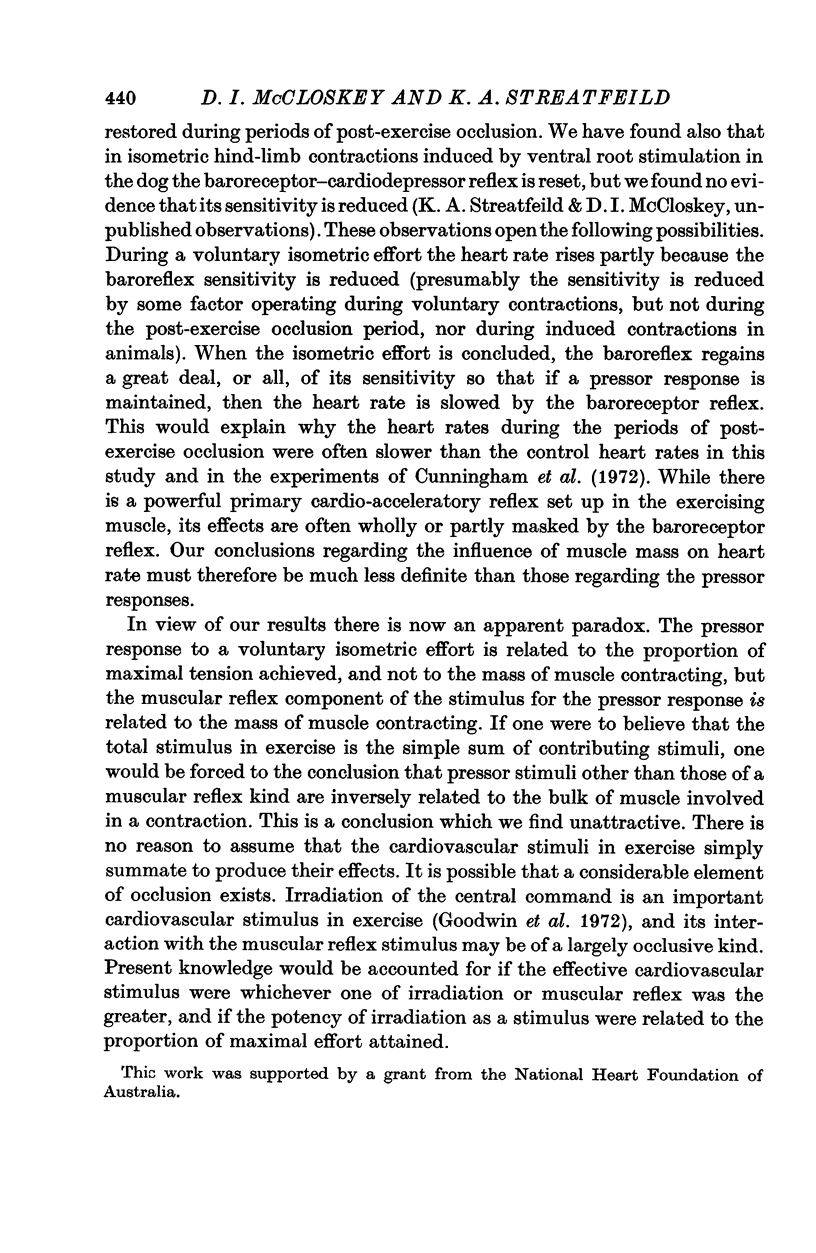
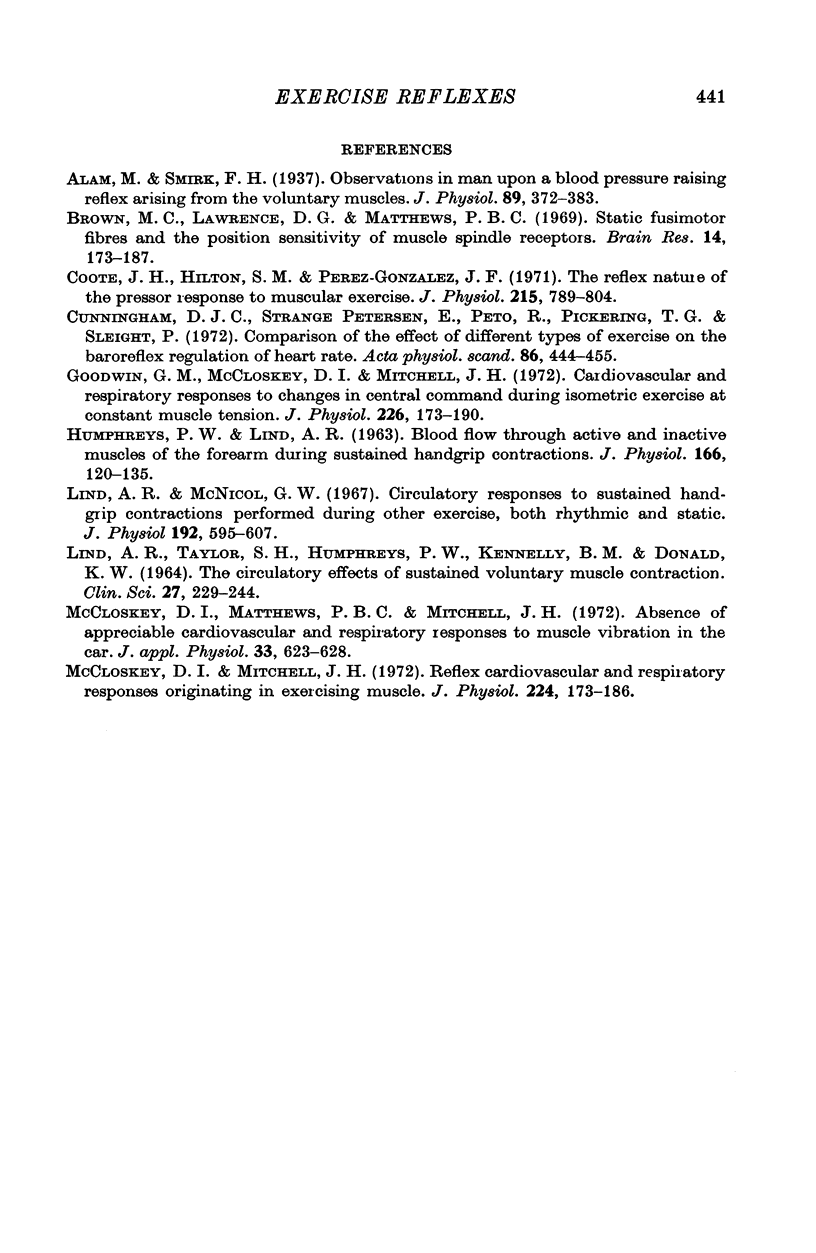
Selected References
These references are in PubMed. This may not be the complete list of references from this article.
- Alam M., Smirk F. H. Observations in man upon a blood pressure raising reflex arising from the voluntary muscles. J Physiol. 1937 Jun 3;89(4):372–383. doi: 10.1113/jphysiol.1937.sp003485. [DOI] [PMC free article] [PubMed] [Google Scholar]
- Brown M. C., Lawrence D. G., Matthews P. B. Static fusimotor fibres and the position sensitivity of muscle spindle receptors. Brain Res. 1969 Jun;14(1):173–187. doi: 10.1016/0006-8993(69)90038-9. [DOI] [PubMed] [Google Scholar]
- Coote J. H., Hilton S. M., Perez-Gonzalez J. F. The reflex nature of the pressor response to muscular exercise. J Physiol. 1971 Jul;215(3):789–804. doi: 10.1113/jphysiol.1971.sp009498. [DOI] [PMC free article] [PubMed] [Google Scholar]
- Cunningham D. J., Petersen E. S., Peto R., Pickering T. G., Sleight P. Comparison of the effect of different types of exercise on the baroreflex regulation of heart rate. Acta Physiol Scand. 1972 Dec;86(4):444–455. [PubMed] [Google Scholar]
- Goodwin G. M., McCloskey D. I., Mitchell J. H. Cardiovascular and respiratory responses to changes in central command during isometric exercise at constant muscle tension. J Physiol. 1972 Oct;226(1):173–190. doi: 10.1113/jphysiol.1972.sp009979. [DOI] [PMC free article] [PubMed] [Google Scholar]
- HUMPHREYS P. W., LIND A. R. The blood flow through active and inactive muscles of the forearm during sustained hand-grip contractions. J Physiol. 1963 Apr;166:120–135. doi: 10.1113/jphysiol.1963.sp007094. [DOI] [PMC free article] [PubMed] [Google Scholar]
- LIND A. R., TAYLOR S. H., HUMPHREYS P. W., KENNELLY B. M., DONALD K. W. THE CIRCULATIORY EFFECTS OF SUSTAINED VOLUNTARY MUSCLE CONTRACTION. Clin Sci. 1964 Oct;27:229–244. [PubMed] [Google Scholar]
- Lind A. R., McNicol G. W. Circulatory responses to sustained hand-grip contractions performed during other exercise, both rhythmic and static. J Physiol. 1967 Oct;192(3):595–607. doi: 10.1113/jphysiol.1967.sp008319. [DOI] [PMC free article] [PubMed] [Google Scholar]
- McCloskey D. I., Matthews P. B., Mitchell J. H. Absence of appreciable cardiovascular and respiratory responses to muscle vibration. J Appl Physiol. 1972 Nov;33(5):623–626. doi: 10.1152/jappl.1972.33.5.623. [DOI] [PubMed] [Google Scholar]
- McCloskey D. I., Mitchell J. H. Reflex cardiovascular and respiratory responses originating in exercising muscle. J Physiol. 1972 Jul;224(1):173–186. doi: 10.1113/jphysiol.1972.sp009887. [DOI] [PMC free article] [PubMed] [Google Scholar]


